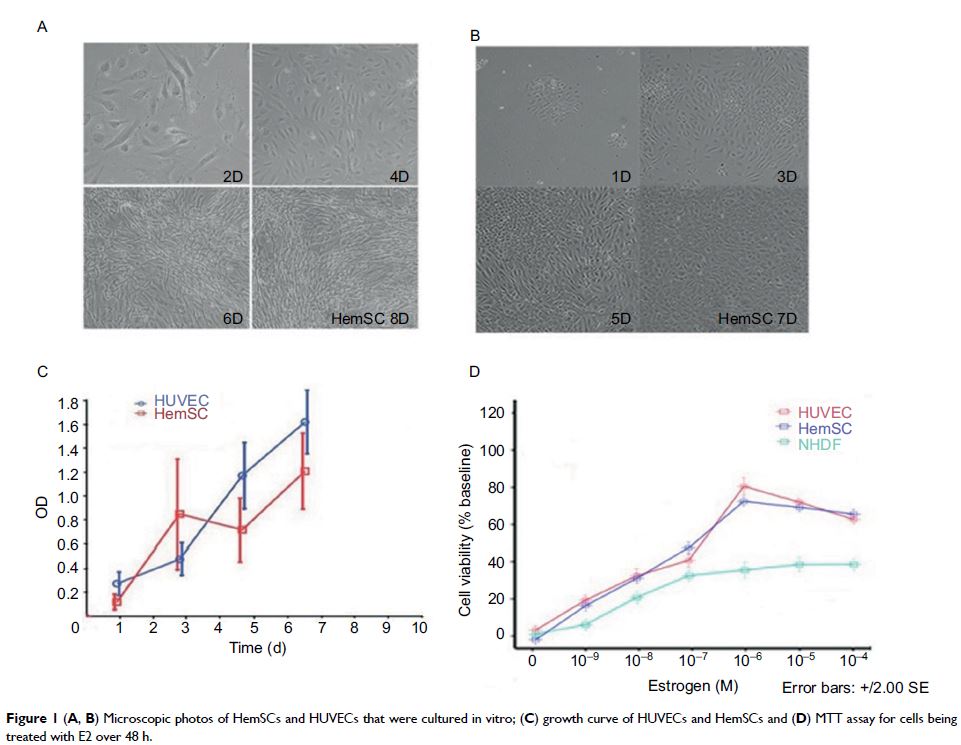9 5 3 6 3
论文已发表
注册即可获取德孚的最新动态
IF 收录期刊
- 3.3 Breast Cancer (Dove Med Press)
- 3.4 Clin Epidemiol
- 2.5 Cancer Manag Res
- 2.9 Infect Drug Resist
- 3.5 Clin Interv Aging
- 4.7 Drug Des Dev Ther
- 2.7 Int J Chronic Obstr
- 6.6 Int J Nanomed
- 2.5 Int J Women's Health
- 2.5 Neuropsych Dis Treat
- 2.7 OncoTargets Ther
- 2.0 Patient Prefer Adher
- 2.3 Ther Clin Risk Manag
- 2.5 J Pain Res
- 2.8 Diabet Metab Synd Ob
- 2.8 Psychol Res Behav Ma
- 3.0 Nat Sci Sleep
- 1.8 Pharmgenomics Pers Med
- 2.7 Risk Manag Healthc Policy
- 4.2 J Inflamm Res
- 2.1 Int J Gen Med
- 4.2 J Hepatocell Carcinoma
- 3.7 J Asthma Allergy
- 1.9 Clin Cosmet Investig Dermatol
- 2.7 J Multidiscip Healthc

由雌激素介导的血管瘤衍生的干细胞通过雌激素受体 α 用于婴儿血管瘤治疗
Authors Zhang L, Wu H, Yuan W, Zheng J
Received 3 April 2017
Accepted for publication 12 June 2017
Published 7 July 2017 Volume 2017:9 Pages 279—286
DOI https://doi.org/10.2147/CMAR.S138687
Checked for plagiarism Yes
Review by Single-blind
Peer reviewers approved by Dr Colin Mak
Peer reviewer comments 2
Editor who approved publication: Professor Kenan Onel
Background: Infantile hemangiomas (IHs) are the most common benign vascular tumor of
infancy. They occur more frequently in female infants. The cause of hemangioma
is currently unknown; however, current studies suggested the importance of
estrogen (E2) signaling in hemangioma proliferation.
Methods: Hemangioma-derived stem cells (HemSCs) were cultured with estrogen for
48–72 h; the cell viability and proliferation were evaluated with the
messenger RNA (mRNA) and protein expression levels of fibroblast growth factor
2 (FGF2), vascular endothelial growth factor-A (VEGF-A) and estrogen receptor-α
(ER-α), by application of several in vitro assays, such as methyl thiazolyl
tetrazolium (MTT), reverse transcriptase–polymerase chain reaction (RT-PCR),
real-time PCR, enzyme-linked immunosorbent assay (ELISA) and Western blotting.
Also, the cell population’s response to external estrogen was investigated by
in vivo experiments. HemSCs and human umbilical vein endothelial cells (HUVECs)
were mixed and injected subcutaneously into 20 flank of BALB/c-nu mice, which
were randomly divided into 5 groups based on different E2 treatment doses (0,
0.01, 0.1 and 1 mg, respectively), 0.1 mg dimethyl sulfoxide (DMSO)
as control. Each group of mice were treated intramuscularly every week, then 2
and 4 weeks later, the subcutaneous implants were harvested and evaluated
the tumor tissues with microvessel density (MVD) assay and
immunohistochemistry.
Results: The study demonstrated that application of E2 increased the expression
of FGF2, VEGF-A, and ER-α in HemSCs with the optimal concentration from 10−9 to 10−5 M. Two-week treatment of E2 promoted expression of VEGF-A and FGF2
in HemSCs culture. Morphological, histological and immunohistological
improvements were observed in vivo using murine IH model in which HemSCs and
HUVECs were implanted into BALB/c-nu mice that were post-injected with E2. In
the grafts, mean MVD was markedly increased.
Conclusion: The results suggested that E2 promotes angiogenesis via
combination with ER-α to up-regulate the expression of VEGF-A in HemSCs,
promoting proliferation of IHs. These findings provide critical insight into
the potential mechanisms of E2 action on IHs.
Keywords: hemangioma-derived stem cells, estrogen, vascular endothelial growth
factor-A, estrogen receptor-α, infantile hemangioma
